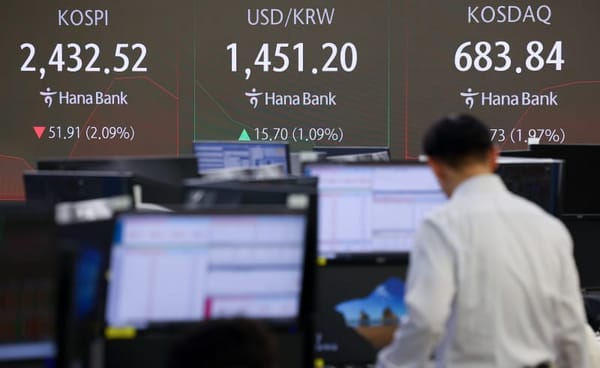Photo: Sign outside of a real estate office in Eunpyeong-gu District of Seoul, saying "Urgent Sale". Credit: the Blue Roof.
As South Korea’s real estate market continues to nosedive, massive failures of jeonse 전세 rents are becoming increasingly common. In a jeonse rent, the tenant gives the landlord a very large deposit - typically up to 70 percent of the value of the house - to be returned after two to three years, rather than paying a monthly rent, essentially giving the landlord an interest-free loan.
When the real estate market was sizzling, a typical practice was “gap investment 갭투자”, or using the jeonse deposit to invest in even more real estate. Earlier this year, as the real estate market declined, the most extreme forms of gap investments - some involving more than a thousand housing units - began to fail, wiping out the nest eggs of thousands of tenants in one fell swoop. (See previous coverage, “Deaths of the ‘Villa Kings.’”)
Gap investments have continued to fail all around the country as the market has continued its slide. On April 19, police announced the investigation of a failed gap investment scheme in Hwaseong, Gyeonggi-do Province 경기도 화성, involving at least 253 tenants. Two days later, a similar failure affecting more than 500 tenants was reported in Guri, Gyeonggi-do Province 경기도 구리. In Busan 부산, a landlord with more than 90 housing units disappeared, taking KRW 5.4b (USD 4.1m) of his tenants’ collective deposits. In Daejeon 대전, more than 20 tenants lost their deposits to a fugitive landlord.
Theoretically, tenants could take out insurance policies to protect themselves in case their landlord fails to repay the jeonse deposit, or could place a lien on the homes they rent. But many do not buy the insurance, and liens are frequently rendered worthless because gap investors typically take out loans to make the initial investment, pledging their property as collateral to the bank, which takes priority over the tenant’s lien. In practical terms, this often means that the banks auction off the house for pennies on the dollar, forcing tenants to move out without recovering their deposits, which usually represent their life savings.
These market failures are beginning to take a human toll - particularly among young people, who are less experienced in real estate transactions and more likely to live in small, mass-produced housing units that are easy to acquire for gap investments. Since late February, at least three tenants who lost their deposits and were facing eviction - all in their 20s and 30s - took their own lives.
But gap investment is not a niche and exotic practice for a handful of bad actors; rather, it is a common way for South Korea’s middle class to attempt to invest and build wealth. Failed gap investment schemes involving dozens or hundreds of units make the headlines, but it is exceedingly common for South Korean households with disposable income looking to invest in the real estate market to hold portfolios of five to ten units, and those housing units are equally exposed to credit risk.
According to a report by Justice Party Assembly Member Sim Sang-jeong 심상정 정의당 국회의원, more than 121k housing units nationwide are valued at 80% or higher than their jeonse deposit - in other words, it is highly likely that the landlords could not pay back the jeonse deposit even if they sold their housing units. An additional 111k units are valued at between 60-80% of their jeonse deposit, facing a similar risk if the housing market should continue to decline.
A typical jeonse contract is for two years, which means the jeonse deposits that are coming due now were made back in early 2021, when South Korea’s real estate market was at the beginning of a feverish high that peaked later the same year. This means that by the end of this year, South Korea may have a full-blown financial crisis on its hands, with landlords holding depreciated assets effectively facing a margin call from their tenants, and unable to fulfill it.








